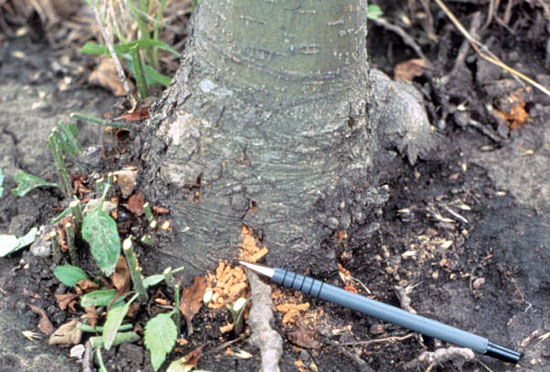Issue 4, May 14, 2010
Roundheaded Appletree Borer
Most roundheaded borers attack dying or dead trees, but there are a few exceptions, Asian longhorned beetle, linden borer, and roundheaded appletree borer being among them. Roundheaded appletree borer attacks rose family plants including hawthorn, mountain ash, quince, serviceberry (shadbush), cotoneaster, and crabapple.
At this time of year, roundheaded appletree borer adults emerge from infested trees. The adult beetles are elongate, one-half to one-inch long, brown to black beetles with white undersides, two white stripes down the back, and long antennae. Females fly for about 40 days, making one-inch long longitudinal slits through the bark, usually just above the soil line. Within each slit, she lays a single egg.
The hatching legless larvae tunnel up and down in the sapwood. Fully-grown larvae are whitish with dark heads and are about one and one-half inches long. They grow slowly, taking two to three years to become fully-grown. Pupation occurs in the larval tunnels.

Nursery stock and newly planted trees are most susceptible to damage, being seen as a partial girdling of the lower trunk, resulting in reduced tree vitality and slow growth. Spraying the lower few feet of the trunk with imidacloprid (Merit) at this time throughout the state should be effective to prevent girdling and other weakening of the trunk near the soil surface.--Phil Nixon
Author:
Phil Nixon